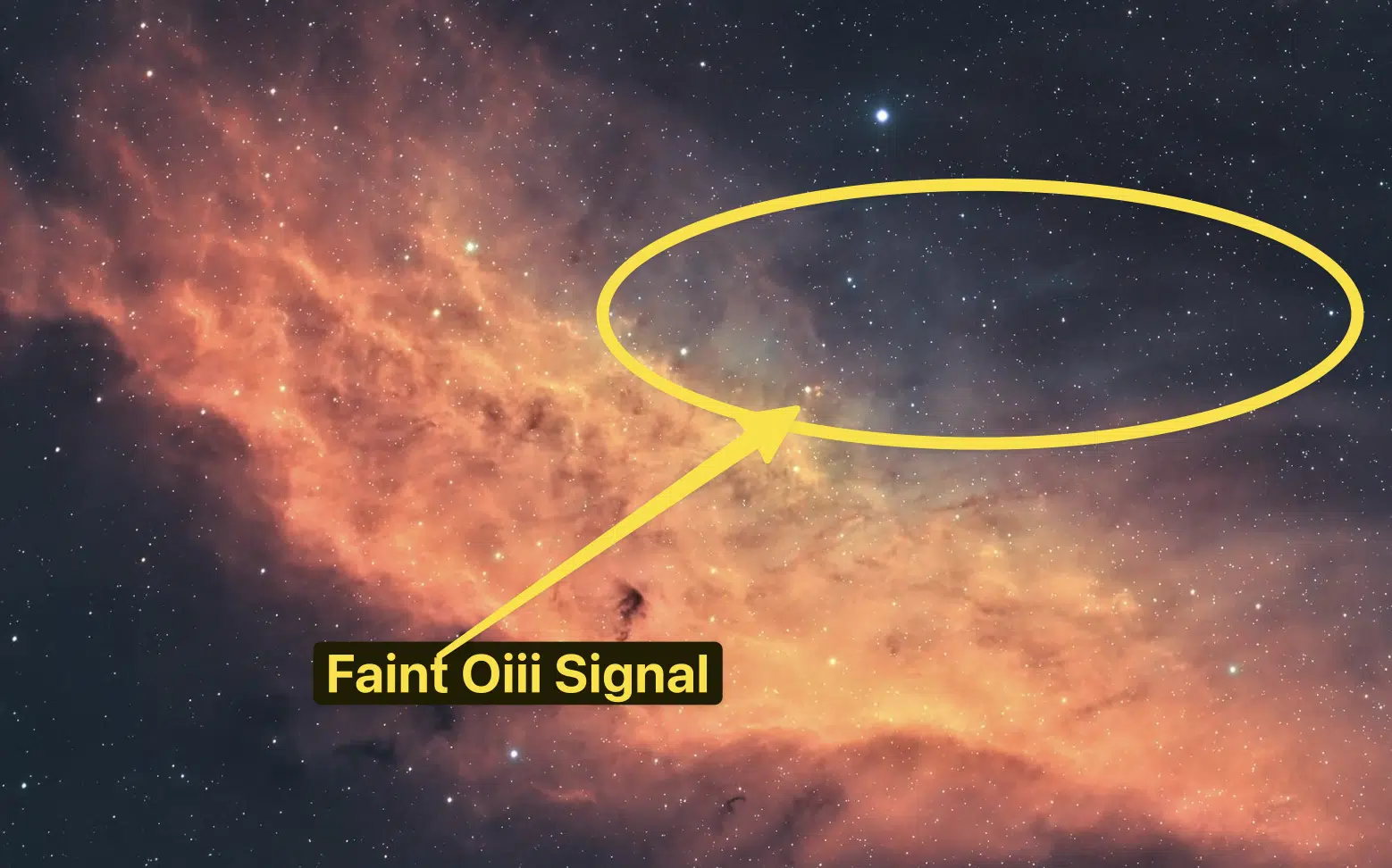This photo of the California Nebula (NGC 1499) dates back to December 2022. It was the first nebula I shot with my ASI533MM mono camera and Antlia 3nm narrowband filters. Although only 6 months have passed, I still love this photo and I would have done nothing differently.
About The California Nebula
The California Nebula got its name because of its shape, as it resembles the state of California. I think most nebulas get their name because of their shape, including The Pacman Nebula and The Wizard Nebula. NGC 1499 is in the constellation Perseus about 1,000 light years from Earth. BTW–1,000 light years is exactly what it sounds like. What we see in the sky happened 1,000 years ago because it takes 1,000 years for light to travel from the California Nebula to Earth. Light travels at 186,000 miles per second. 1 light year is roughly 6 trillion miles. So, this would be 6 quadrillion miles away. That’s unimaginable.
What I Did
I shot about 12 hours of exposure time with Oxygen III (Oiii) receiving the largest amount of data at almost 6 hours or half the time. Hydrogen Alpha (Ha) was 3.5 hours and Sulphur II (Sii) was 2.5 hours. By The goal of shooting so much Oiii was to bring out the faint Oiii transparent signal that floats off the edge of the dominant Ha signal. The mixture of Ha and Sii signal brings out the strong “orangey” color of the nebula.

I think I may have succeeded at this as I really think the transparent blue Oiii signal is prevalent in the California Nebula, although the Ha signal is incredibly strong. You can see the signals that make up this photo in the gallery below. Now you may understand why I shot so much Oiii. Looking at the Oiii photo below, it’s amazing how weak the signal is despite it being 6 hours of exposure.
Mono Signals from NGC 1499
Pixinsight Steps
Linear Processing in Pixinsight
-
- Dynamic Crop on Ha, Sii, and Oiii channels
- Dynamic Background Extraction (DBE) on Ha, Sii, and Oiii channels.
- Blur Xterminator on all 3 channels
- Noise Xterminator on all 3 channels
- Histogram Transformation on all 3 channels making them non-linear.
Non-Linear Processing in Pixinsight
-
- Pixelmath Forax formula to combine all 3 channels into an RGB image.
- Curves Transformation (contrast)
- Star Xterminator to remove stars
- Curves Transformation (slight saturation)
- Curves Transformation (adjust r, g, b channels)
- Local Histogram Equalization to sharpen the center only (via a mask) leaving edges feeling a bit more soft.
- Dark Structure Enhance Script
- Final Curves Transformation (contrast)
